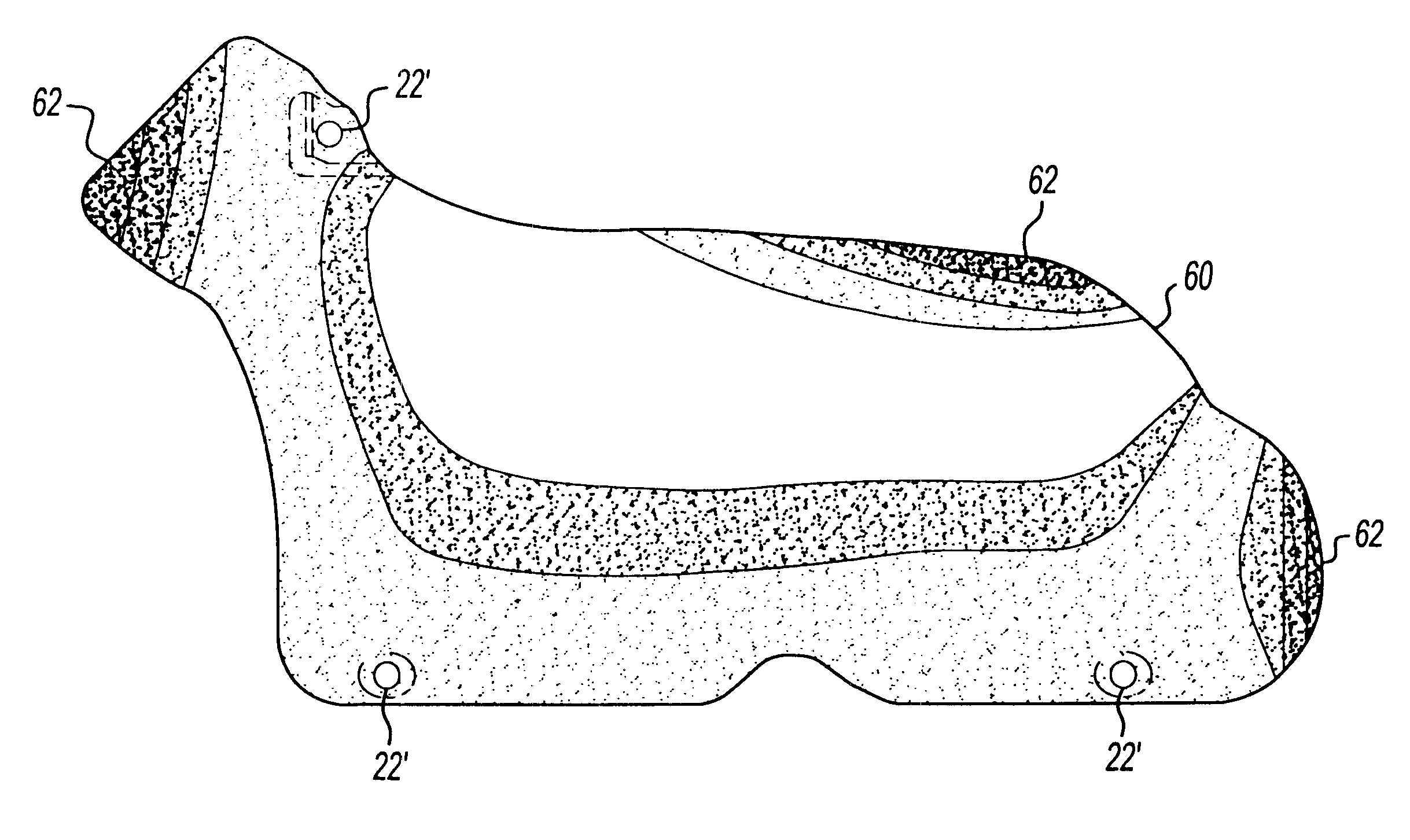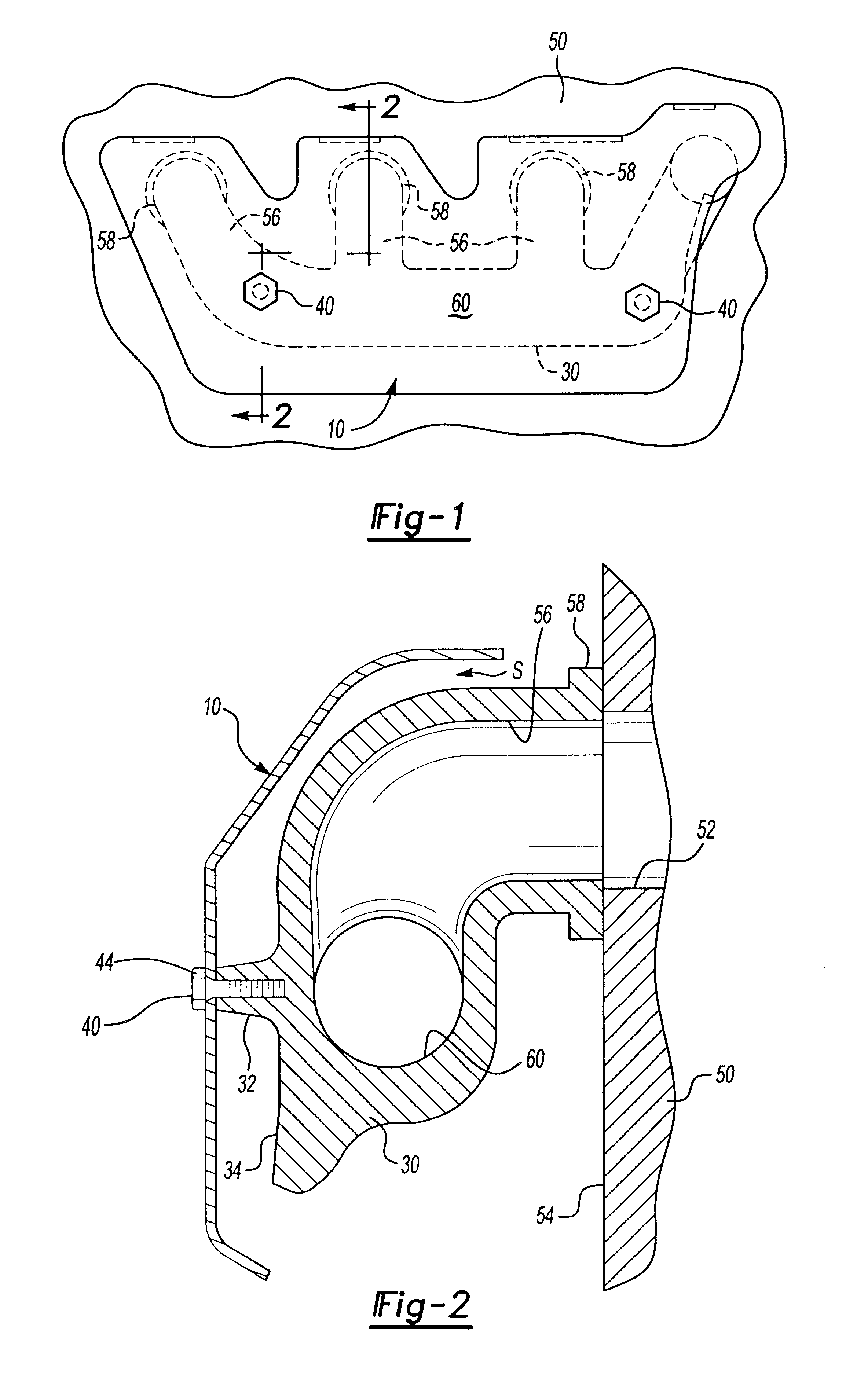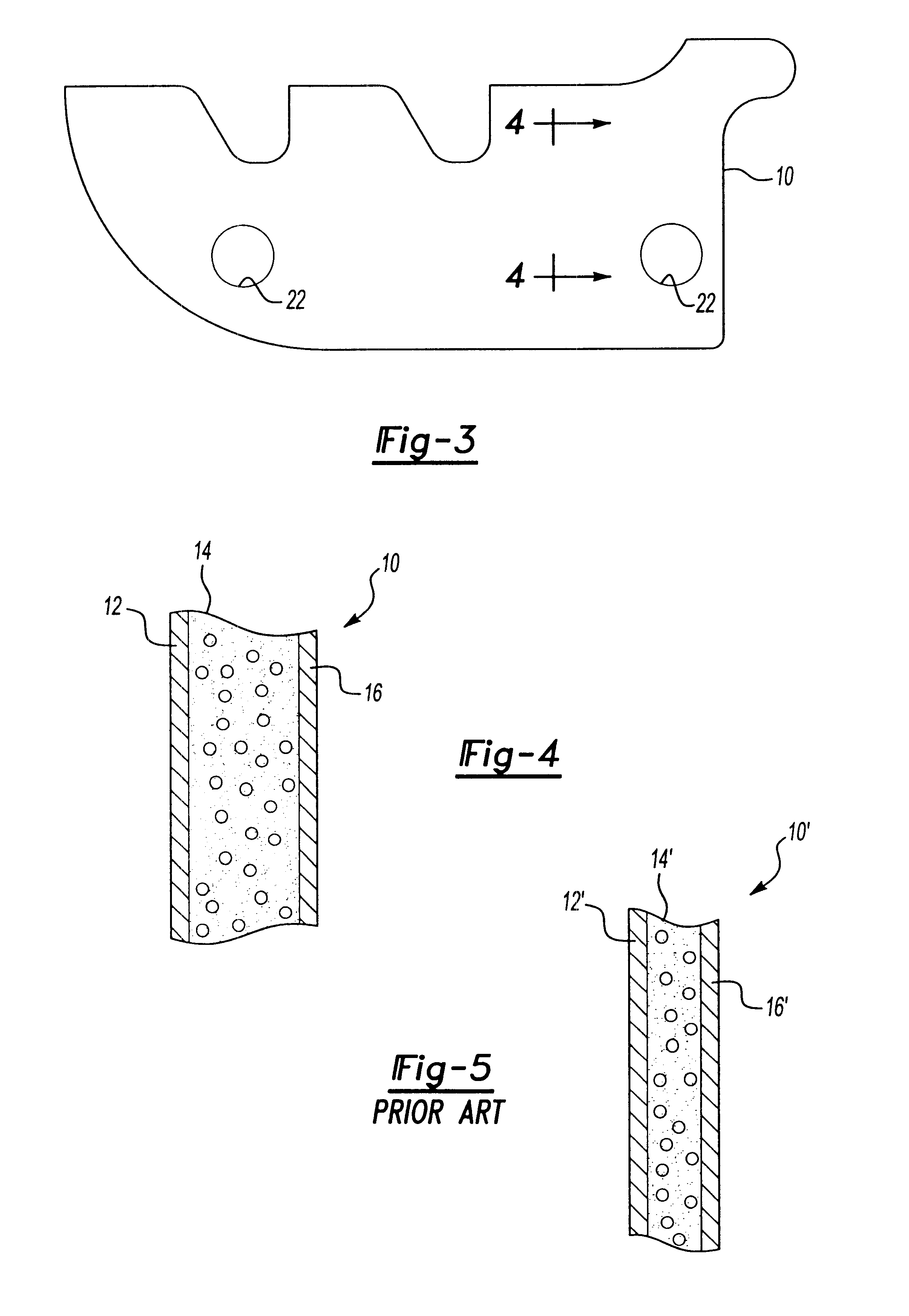Sound barrier layer for insulated heat shield
a technology of insulated heat shield and sound barrier layer, which is applied in the direction of fluid pressure measurement by mechanical elements, vibration measurement in solids, special data processing applications, etc., can solve the problems of insufficient damping of noise, inability to reduce or attenuate noise to satisfactory levels, and significant damage to electronic components sharing under-the-hood space with the manifolds
- Summary
- Abstract
- Description
- Claims
- Application Information
AI Technical Summary
Benefits of technology
Problems solved by technology
Method used
Image
Examples
Embodiment Construction
One method of manufacturing a heat shield for an under-the-hood vehicular engine component produces a shield of three layers, including an inner metal layer, an outer metal layer, and a non-metallic insulation layer sandwiched therebetween. The inner metal layer adapted to be positioned directly adjacent or proximal the engine component, and the insulation layer is positioned radially outwardly of the inner metal layer. The layers collectively provide thermal insulation of, and reduced noise transmission from, the engine component. The specific method included the following steps:
a) establishing relative thickness and density values of an insulation layer by using non-linear modal finite element analysis. (For this step, the heat shield is attached to a test component via fastening bolts. The shield is vibrationally excited to measure and map relative amplitudes of vibration over the entire body of the shield.)
b) determining optimal values of the insulation layer thickness and densi...
PUM
 Login to View More
Login to View More Abstract
Description
Claims
Application Information
 Login to View More
Login to View More - R&D
- Intellectual Property
- Life Sciences
- Materials
- Tech Scout
- Unparalleled Data Quality
- Higher Quality Content
- 60% Fewer Hallucinations
Browse by: Latest US Patents, China's latest patents, Technical Efficacy Thesaurus, Application Domain, Technology Topic, Popular Technical Reports.
© 2025 PatSnap. All rights reserved.Legal|Privacy policy|Modern Slavery Act Transparency Statement|Sitemap|About US| Contact US: help@patsnap.com



